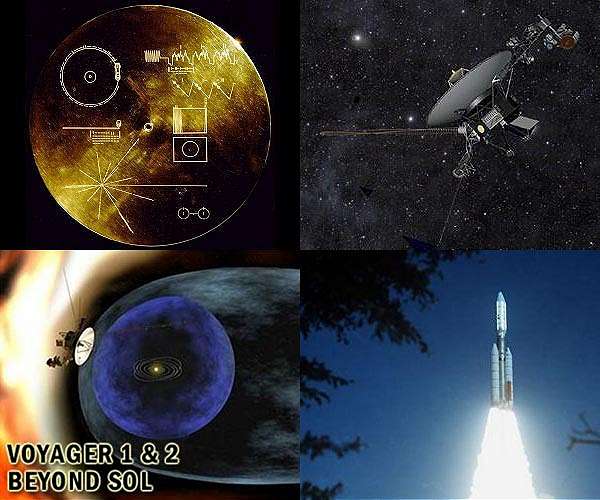
NASA repairs issue with Voyager 1 space probe (Image Credit: Space Daily)
Engineers with NASA have repaired an issue with the space agency’s Voyager 1 spacecraft, but have yet to identify the cause of the problem, officials confirmed on Tuesday.
The probe had been sending garbled data about its status, including information about its health and activities to mission controllers, despite otherwise operating normally.
NASA also said the rest of the probe appeared healthy as it continued to gather and return scientific data.
“The team has since located the source of the garbled information: The AACS (had started sending the telemetry data through an onboard computer known to have stopped working years ago, and the computer corrupted the information,” the agency said in a statement, referencing the probe’s attitude articulation and control system.
Engineers still aren’t sure why the system began sending the telemetry data through an onboard computer known to have stopped working years ago. That computer corrupted the information.
“We’re happy to have the telemetry back,” Voyager project manager Suzanne Dodd said in a statement.
“We’ll do a full memory readout of the AACS and look at everything it’s been doing. That will help us try to diagnose the problem that caused the telemetry issue in the first place. So we’re cautiously optimistic, but we still have more investigating to do.”
The system keeps Voyager 1’s antenna pointed at Earth as it relays data. All signs suggest the AACS is still working and its signal is strong, but the returning telemetry data is invalid.
The system first began malfunctioning in May, prompting NASA engineers to investigate what went wrong with the aging space probe.
Launched in 1977, NASA’s Voyager 1 and Voyager 2 probes are both still active, exploring deep space. Both are still communicating with NASA, despite being launched 45 years ago. The spacecraft are two of only five space probes from Earth that have left the solar system.
They carry eight-track tape players for recording data and have about 3 million times less memory than today’s cellphones, transmitting about 38,000 times slower than a 5G Internet connection.
Voyager 1 is currently 14.5 billion miles from Earth, and is sending back scientific data.
In 2017, Voyager 1’s primary thrusters showed signs of degradation. Engineers then switched to another set of thrusters that had originally been used during the spacecraft’s planetary encounters. Those thrusters worked, despite having not been used for 37 years.
Related Links
Space Tourism, Space Transport and Space Exploration News
|
|
Tweet |
|
|
|
We need your help. The SpaceDaily news network continues to grow but revenues have never been harder to maintain. With the rise of Ad Blockers, and Facebook – our traditional revenue sources via quality network advertising continues to decline. And unlike so many other news sites, we don’t have a paywall – with those annoying usernames and passwords. Our news coverage takes time and effort to publish 365 days a year. If you find our news sites informative and useful then please consider becoming a regular supporter or for now make a one off contribution. |
||
|
SpaceDaily Monthly Supporter $5+ Billed Monthly |
SpaceDaily Contributor $5 Billed Once credit card or paypal |
|
45 years after launch, NASA’s Voyager probes still blazing trails billions of miles away
Washington DC (UPI) Aug 22, 2021
Forty-five years ago, NASA launched the first part of its most ambitious deep space mission in its history – a spacecraft called Voyager 2, which is still communicating with scientists on Earth at a distance of more than 12 billion miles away.
Voyager 1 and Voyager 2 are both in interstellar space. In fact, they are one of only five space probes from Earth that have left the solar system.
Because of planetary alignment and the trajectory needed for its mission, Voyager 2 actually launch … read more








